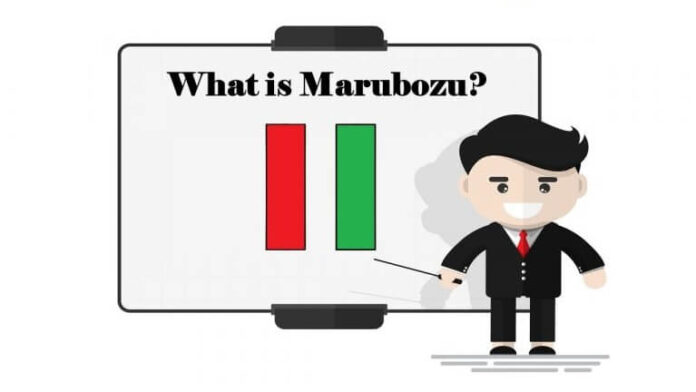A Marubozu is a long or tall Japanese candlestick with no upper or lower shadow (or wick).
The candlestick pattern comes in both a bearish (red or black) and a bullish (green or white) form and is easy to spot due to its long body.
It basically looks like a vertical rectangle.

To identify a Marubozu candlestick pattern, look for the following criteria:
- The single candle involved in the signal should have a long body.
- There must not be an upper or a lower shadow (or wick).
- The candle can be white/green or black/red, and it can appear anywhere on the chart.
- A white/green Marubozu moves upward and is very bullish.
- A black/red Marubozu moves downward and is very bearish.
- The longer the candle is, the stronger the price move.
A bullish Marubozu is called a White Marubozu and a bearish Marubozu is called a Black Marubozu.
Meaning
The word marubozu means “bald head” or “shaved head” in Japanese, and this is reflected in the candlestick’s lack of shadows.
When you see a Marubozu candlestick, the fact that there are no shadows tells you that the session opened at the highest price and closed at the lowest price of the day.
In a bullish Marubozu, the buyers maintained control of the price throughout the session, from the opening to the close.
In a bearish Marubozu, the sellers controlled the price from the opening to the close.
To better analyze a specific Marubozu, observe the following:
- If a White Marubozu occurs at the end of an uptrend, a continuation is likely.
- If a White Marubozu occurs at the end of a downtrend, a reversal is likely.
- If a Black Marubozu occurs at the end of a downtrend, a continuation is likely.
- If a Black Marubozu occurs at the end of an uptrend, a reversal is likely.








Impressive
Thank You
Thanks
Welcome